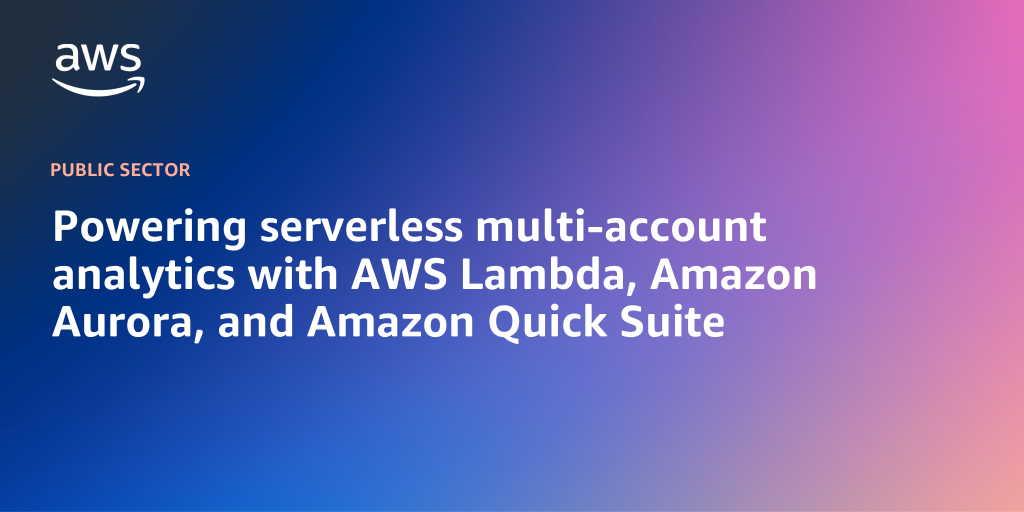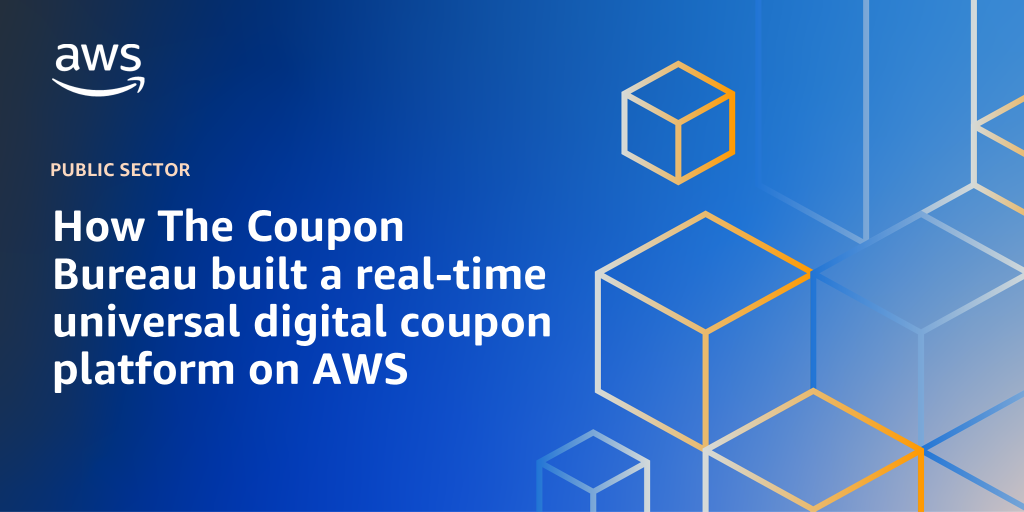AWS Public Sector Blog
Category: AWS Lambda
Powering serverless multi-account analytics with AWS Lambda, Amazon Aurora, and Amazon Quick Suite
As a large Amazon Web Services (AWS) public sector customer, you might need information about which accounts contributed to this month’s billing surge, which workloads generated the most security findings, or which services experienced the highest adoption rates. Although straightforward in single-account environments, finding such information becomes complex when organizations manage hundreds or thousands of AWS accounts.
How The Coupon Bureau built a real-time universal digital coupon platform on AWS
The Coupon Bureau (TCB) is modernizing how coupons work in the US with the first universal digital coupon standard: AI (8112). To make this possible, TCB needed to build a system that could support billions of coupon transactions in real time, integrate seamlessly with hundreds of providers and retailers, and deliver mission-critical reliability. By using AWS services, TCB designed a cloud-based architecture that processes high-volume events, delivers real-time webhook notifications, provides data recovery during outages, and scales seamlessly as adoption grows.
How the University of Minnesota Athletics built a unified data layer to drive fan engagement with AWS
The University of Minnesota Athletics Department had access to a lot of data, but lacked a way to bring it together. Even answering simple questions, like how many tickets were sold and who received them, required hours of cross-platform data wrangling. In less than a year, the department replaced that complexity with a scalable data lake built on AWS. The new data architecture—which gives the department full visibility into ticketing transactions and digital behavior—was built by a small internal team, without requiring a complete overhaul of their existing systems.
Building machine learning operations framework with Amazon SageMaker: Technical Safety BC’s Journey
Technical Safety BC (TSBC) regulates the safe installation and operation of technical systems (electrical, gas, boiler, elevator, etc.) in British Columbia. This post showcases how the TSBC built a machine learning operations (MLOps) solution using AWS to streamline production model training and management to process public safety inquiries more efficiently.
AWS Professional Services collaborates with NOAA and GAMA-1 Technologies to expand NESDIS Common Cloud Framework capabilities
AWS Professional Services has partnered with the National Environmental Satellite, Data, and Information Service (NESDIS), part of the National Oceanic and Atmospheric Administration (NOAA), alongside GAMA-1 Technologies to broaden the scope and capabilities of the NESDIS Common Cloud Framework (NCCF). This work supports NOAA’s ability to ingest, manage, process, and disseminate critical environmental data. Read this post to learn more.
Efficient large-scale serverless data processing for slow downstream systems
This post demonstrates how to build serverless workflows on AWS that process such data using AWS Step Functions and integrate with downstream systems that have concurrency limitations.
Greenwood Genetic Center transforms genomic medicine on AWS
The Greenwood Genetic Center (GGC) is a nonprofit institute organized to provide clinical genetic services, diagnostic laboratory testing, educational programs and resources, and research in the field of medical genetics. To make its medical records accessible to providers, the GGC created a data warehouse to serve as a single repository for its data, where clinicians have access to an all-encompassing view of patients’ records. Read this post to learn more.
Leveraging generative AI to accelerate public health genomics data standardization
In this post, we discuss the AI Genomic Schema Harmonizer, a generative AI–powered application that revolutionizes how laboratories prepare genomic data for submission to public repositories.
Transforming Medicaid: Crafting a robust data strategy with AWS for operational efficiency
What if a Medicaid agency could make sure that their leadership and staff had access to a reliable, single source of truth for their data in one unified platform? The implementation of an operational data store (ODS) presents a viable solution. This post explains the architectural choices available with Amazon Web Services (AWS) to effectively create and maintain an ODS.
Breaking barriers: How AWS is revolutionizing the accessibility of federal agency communications for people with visual disabilities
In this post, we discuss a solution that uses AWS services to improve government communication accessibility and meet federal accessibility requirements. The serverless architecture automates document-to-speech conversion and delivers information to citizens with visual disabilities.









